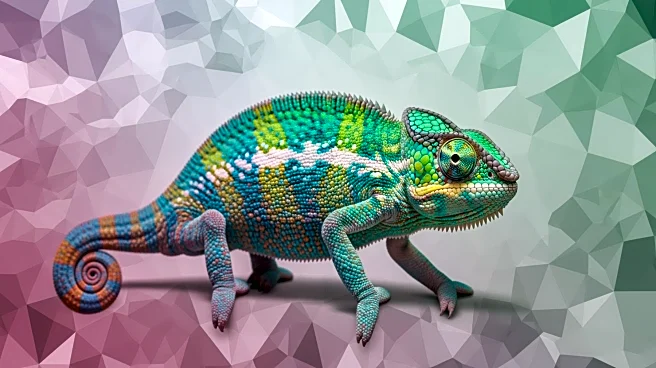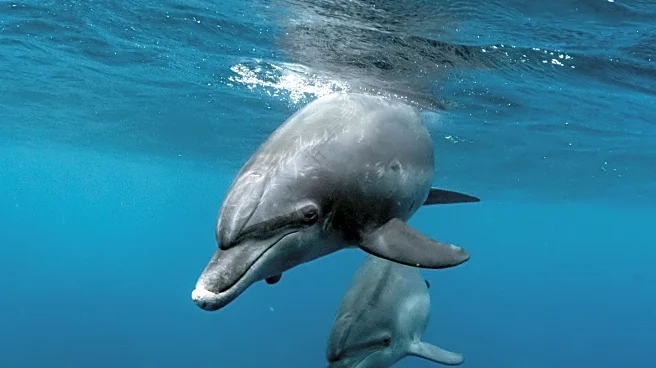What's Happening?
Scientists have identified a unique feature in chameleons: coiled optic nerves that allow their eyes to move independently, providing a nearly 360-degree view. This discovery, published in Scientific Reports,
was made using modern imaging techniques, revealing a structure not seen in any other lizard. The optic nerves' coiled nature was first noticed in a CT scan of the minute leaf chameleon. Despite extensive historical study, this feature had been overlooked, even by figures like Aristotle and Newton. The coiled optic nerves are believed to give chameleons the ability to move their eyes with minimal physical strain, a necessity due to their limited neck mobility.
Why It's Important?
This discovery sheds light on the evolutionary adaptations of chameleons, highlighting their unique anatomical features that support their survival strategies. Understanding these adaptations can provide insights into evolutionary biology and the development of sensory systems in animals. The findings also underscore the importance of modern imaging technologies in uncovering previously hidden biological structures. This could lead to further research into similar adaptations in other species, potentially influencing fields such as robotics and biomimicry, where understanding natural mechanisms can inspire technological innovations.
What's Next?
Researchers plan to investigate whether similar adaptations exist in other tree-dwelling lizards. This could expand the understanding of evolutionary adaptations in reptiles and contribute to the broader field of evolutionary biology. The use of CT scanning and open data initiatives like oVert will likely continue to play a crucial role in these studies, allowing scientists to explore anatomical features without damaging specimens.
Beyond the Headlines
The discovery highlights the limitations of historical scientific methods and the potential of modern technology to revolutionize our understanding of biology. It also raises questions about what other biological features might have been overlooked in well-studied species, suggesting that there is still much to learn from the natural world.











